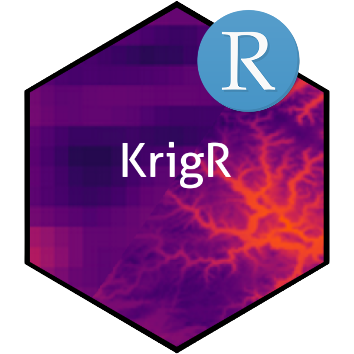KrigR Workshop
KrigR is currently undergoing major redevelopment with respect to updating functionality to remove deprecated dependencies and to enable operations targeting the new CDS. The workshop material presented here is being redeveloped at the same time. At present, I recommend to use the development version of KrigR - the workshop material detailing setup and quickguide have already been reworked to reference this version of the package which will soon become the new main version of KrigR.

The Copernicus Climate Data Store (CDS) host a variety of data products - like world-leading climate reanalysis products - which provide more accurate environmental information at higher temporal resolution than traditional climate data products used in downstream applications in ecology, anthropology, macroeconomics, epidemeology, and many others.

The KrigR R-package reduces barriers for users to (a) download CDS-hosted data (b) aggregate these data to desired temporal resolutions and metrics, (c) acquire and prepare co-variates matching these products, and (d) statistically downscale spatial data using co-variates via kriging which allows for integration of data uncertainty with interpolation uncertainty for improved data reliability indicators.
The KrigR workflow allows highly flexible data product creation for unparalleled aligning of data set specifications with research objectives. Climate and weather products obtained through KrigR offer great potential for quantification of exposure to extreme events due to their combinations of high spatial and temporal resolutions. Lastly, KrigR can incorporate third-party data which enables generation of high-resolution, bias-corrected climate projection data allowing for forecasting at high-resolution.
I have created KrigR for download, temporal aggregation, masking, and statistically interpolating ERA5(-Land) data. We first presented the R-Package (KrigR) itself in
Kusch,Davy, 2022. In
Davy, Kusch, 2021 published previously my colleague and I demonstrated how data obtained through the KrigR framework relate to previously offered ready-made data sets and why we strongly believe that data handling pipelines (rather than ready-made data sets) are the way forward for downstream analyses.
Throughout this workshop material, I walk you through the functionality, use-cases, and quality of life aspects with KrigR.
Learning Goals
Throughout this workshop, you will learn how to:
- Query downloads of state-of-the-art climate data using
KrigR - Use the data processing functionality contained in
KrigRto achieve data at desired spatial scales and temporal resolutions - Obtain and process covariate data for use in statistical interpolation via kriging
- Carry out kriging using the
KrigRpackage
Issues & Feature Requests
If you run into any error messages, bugs, want to inquire about some KrigR functionality, or request new functionality, please do so by registering an
issue on the KrigR GitHub. Please, refrain from sending these via E-mail.
Disclaimer
If you find any typos in my material, are unhappy with some of what or how I am presenting or simply unclear about thing, do not hesitate to contact me.
All the best,
Erik